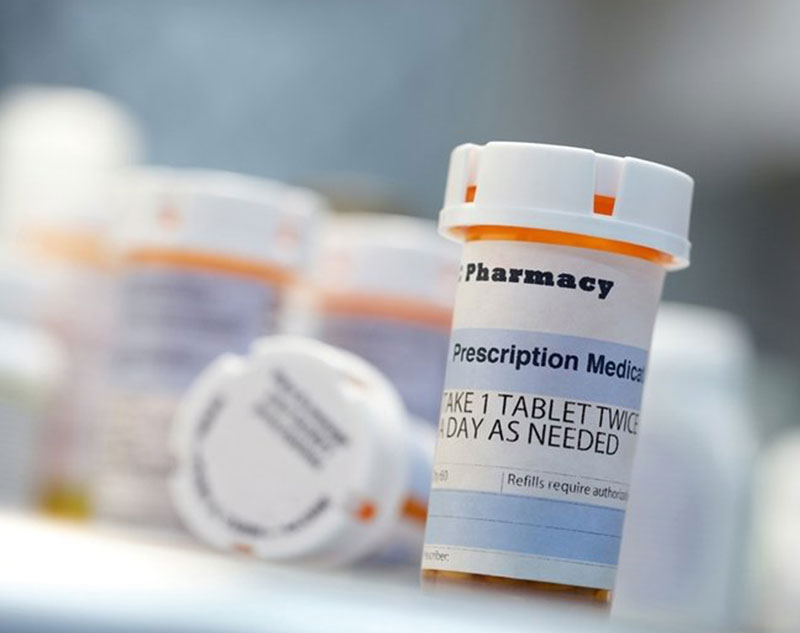Brand Vs Generic Seizure Medications

Article Highlights
The brand vs generic antiepileptic drug (AED) controversy remains a hot debate in the epilepsy community. Generic AEDs are often much less expensive for patients compared to brand AEDs. However, brand AEDs may provide more reliable seizure medication levels which could potentially reduce side effects and improve seizure control. We recommend that decisions about whether to use a brand or generic AED should be tailored to the individual patient’s clinical situation.
The use of brand AEDs may be preferable in certain high risk groups. Examples of higher risk groups include:
- Patients with significant risk for prolonged and dangerous seizures;
- Pregnant patients
- Patients with well controlled seizures who are driving.
Introduction
In the last few years, several generic alternatives for antiepileptic drugs (AED) have become available on the market. A major and often heated debate has ensued—to treat patients with generic AEDs to save money or to demand brand only AEDs to ensure optimal seizure control and side effect profile. Proponents of both sides of the argument have data to support their respective positions. At this time, the brand vs generic debate remains very controversial. The arguments can be summarized as follows:
Pro Brand Aed Argument
- Consistent manufacturer: When a patient is taking a brand AED, they are receiving medication from the same manufacturer. In contrast, each AED can have many (often > 10) manufacturers. This can lead to a different appearing pill when a patient goes to the pharmacy to pick-up their medications. More importantly, the various generic formulations may have slight differences compared to brand AED for absorption into the body and metabolism from the body. These differences could lead to side effects (AED levels shoot-up too high) or seizures (AED levels drop too low).
- Risk of seizures: For some patients, even one break-through seizure can be a disaster. Patients with very difficult to control seizures may go into convulsive status epilepticus (prolonged seizure activity that can be life-threatening). Patients who are pregnant could have seizures that result in injury to a fetus. Many patients with well controlled seizures are driving- a single seizure while driving could result in serious injury or death to the patient or others on the road. These issues need to be considered when deciding about taking the brand vs generic AED.
- Evidence from the literature: There is some evidence in the literature suggesting that changing from the brand to the generic formulation of an AED can result in seizure activity. For example, a retrospective study (Zachary 2009) reviewed seizure related emergency/urgent care utilization (emergency room visits and hospitalizations). They compared those who had been switched from brand to generic AEDs vs those who remained on the brand AED. Patients who were switched to generic AEDs were significantly more likely to use emergency/urgent medical care (11.3% of generic AED patients vs 6.2% of controls). Although this is not clear proof, the study does support the concept that switching to a generic AED may result in an increased risk of serious break-through seizures.
- Overall costs: Although generic AEDs are cheaper compared to brand AEDs, there is an argument that the overall costs (cost of medication, clinic visits, emergency room visits, and hospitalizations) are less expensive with the brand compared to the generic AED. For example, a pharmacoeconomic study (Lelorier 2008) indicated that the savings associated with switching to a generic AED were offset by higher costs due to increased utilization of medical services (clinic visits, emergency room visits and hospitalizations).
Pro Brand Aed Argument
- Generic AEDs are cheaper: Generic AEDs are often dramatically less expensive compared to brand AEDs. The difference can be several hundred dollars a month difference. Financial realities can create a situation in which a patient can only afford the generic AED.
- No significant differences between brand and generic AEDs: The FDA mandates that the brand and generic AEDs are extremely close in terms of how they are metabolized. There are strict criteria for bioequivalence. The FDA definition of bioequivalence is: “The absence of a significant difference in the rate and extent to which the active ingredient or active moiety in pharmaceutical equivalents becomes available at the site of drug action when administered at the same molar dose under similar conditions in an appropriately designed study.” The bottom-line is that brand and generic AEDs are very similar in how they work and how they are cleared from the body. For example, it has been shown that the average plasma AED concentration differs between the brand and generic AED by no more than 5-7% (Perucca 2006). This small difference is usually not considered clinically significant.
- Potential cost savings: Generic AEDs can significantly reduce the overall medication related health-care costs. It has been estimated that laws which mandate generic medication use could reduce the cost of prescribed medications by 10-15%. This could translate into a $14 billion reduced expenditure on medications.
- No definitive proof that brand is better: The evidence that seizure control worsens or side effects occur as a direct result of changing from brand to generic AED are not conclusive.
Conclusions
The brand vs generic AED debate is complicated. Generic medications may be significantly less expensive than brand AEDs. However, there is some evidence that brand AEDs may provide moretreatment to the individual patient. For some patients, break through seizures could be potentially dangerous—brand AEDs may be preferable in such patients.

If you have questions about this important topic, please post a comment.
To schedule a visit at the Minnesota Epilepsy Group Hudson clinic, please call 715-377-1616.
References
Gidal B, Tomson T. Debate: Substitution of generic drugs in epilepsy: Is there cause for concern? Epilepsia 2008;49(Suppl. 9): 56-62.
Lelorier J, Duh MS, Paradis P, et al. Economic impact of generic substitution of lamotrigine: projected costs in the US using findings in a Canadian setting. Current Med Res Opin 2008;24:1069-1081.
Perucca E, Albani F, Capovilla G, et al. Recommendations of the Italian League Against Epilepsy work group on generic products of antiepileptic drugs. Epilepsia 47(Suppl. 5):16-20.
Privitera M. Generic Antiepileptic drugs: current controversies and future directions. Epilepsy Currents 2008;8:113-117.
Zachary WM, Doan QD, Clewell JD, Smith BJ. Case-control analysis of ambulance, emergency room or inpatient hospital events for epilepsy and antiepileptic drug formulation changes. Epilepsia 2009;50:493-500.

James White, MD
Dr. White has been practicing as a full-time epileptologist since 1999. His practice focuses on optimizing the diagnosis and treatment of patients with seizure disorders. Dr. White’s special interests include patient education, improving the side-effect profile of seizure medications, and epilepsy surgery.
2 Responses to “Brand VS Generic Seizure Medications”
Deb Thoennes August 3, 2011 at 6:45 am
Dr. White,
This morning I read the article you cited by Michael D. Privitera (Generic Antiepileptic Drugs: Current Controversies and Future Directions. Epilepsy Currents, 2008). I have to agree with the American Epilepsy Society’s position that “formulation substitution should not take place without the physician and patient’s approval”. Years ago, I was completely taken by surprise when I went to pick up my husband’s medication and it had been replaced by a generic. When I questioned the pharmacy, and reminded them the prescription had been written as “brand name medically necessary”, they said the insurance company wouldn’t pay for brand because a new generic was available. At the time, I couldn’t believe an insurance company would have the power to override a doctor’s decision on which medication to prescribe.
I personally believe generics can be appropriate for a variety of ailments and disorders, but that AEDs aren’t one of them. Seizure control can be hard enough to obtain. For those lucky enough to find it, there is nothing worth the risk of throwing things out of balance. Thanks to you and your staff for helping us many times to keep things as they are. There was a time my husband and I thought he would never be seizure free. It has now been almost 11 years! 🙂 We are thankful for every day.
In our experience, if an insurance company will only pay for generic, an individual can still take the brand name medication if they pay the difference in cost between the two. Of course, sometimes that’s not financially possible, since in many instances the difference in price is several hundreds of dollars. Speaking of that, we have found that once the generics start to become available, the cost of the brand increases. To stay competitive, wouldn’t it make more sense that the cost of the brand should come down when generics are available? Or do they try to make up the money they are losing by people switching to generic?
Thanks for your time.
Deb T.

Linda Cunning July 19, 2012 at 5:55 am
Recently, I took a generic Of Keppra, A drug that worked well for 7 years. The generic meant unbearable itching and burning, but good control. My problem was probably the “Inert” ingredients also known as the fillers or excipients .
From the web, I found:
“The excipients and additives in drug formulations have been described as inert because they do not have an active role in the prevention or treatment of particular ailments. This has led to the misconception among physicians, pharmacists, drug manufacturers and the public that excipients are harmless and unworthy of mention. In fact, pharmacists are allowed to substitute drug formulations, without regard to the excipients, as long as they ensure that the active ingredients in the substitute are the same as those in the formulation prescribed.
The inappropriateness of the term inert is becoming increasingly apparent as evidence of adverse reactions–some fatal–to excipients mounts. The likelihood that some “active” constituents, particularly erythromycin, have been blamed for such reactions deserves to be investigated. The public deserves to be better protected. For example, the United States has legislation requiring complete labelling of all food, drugs and cosmetics that incorporate more than one ingredient, no matter how innocuous the constituents are believed to be. ”
I have read almost a hundred sheets of the contents of generic levetiracetam tablets. I have yet to see ONE that duplicates the ingredients of Keppra.

